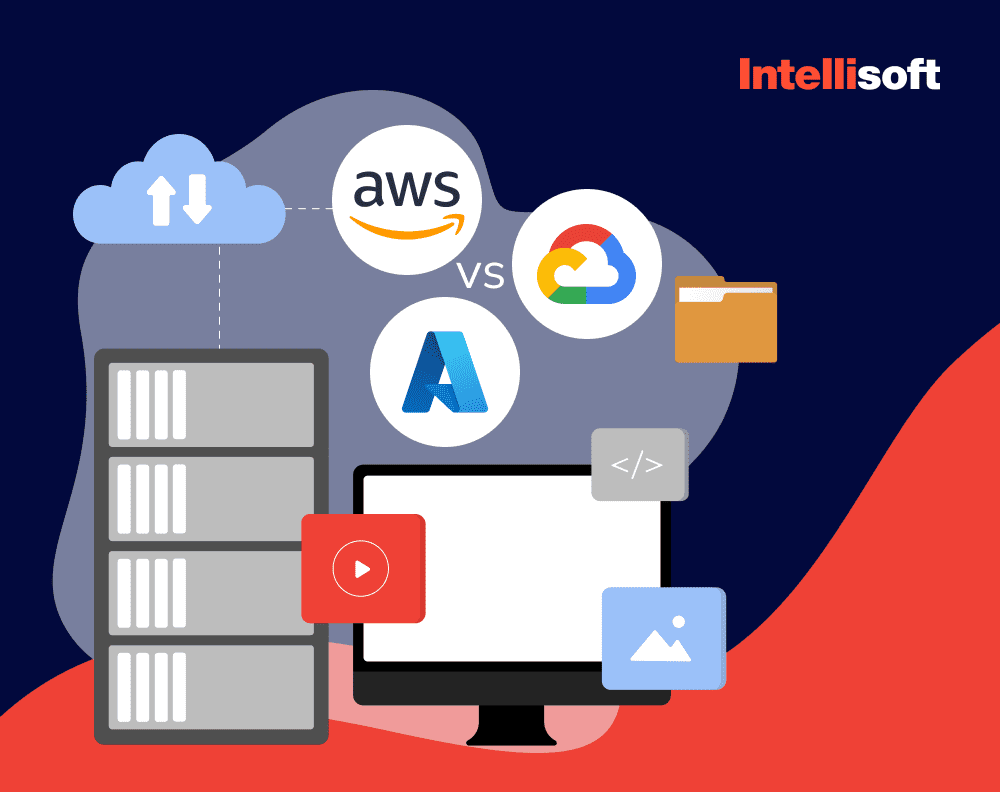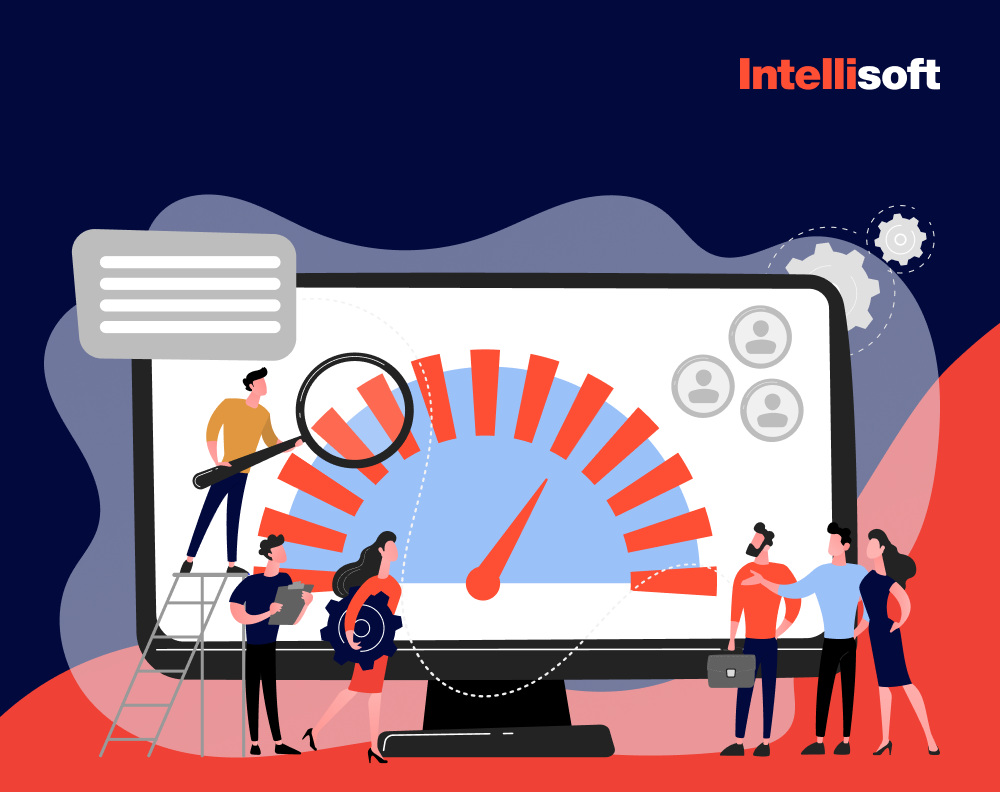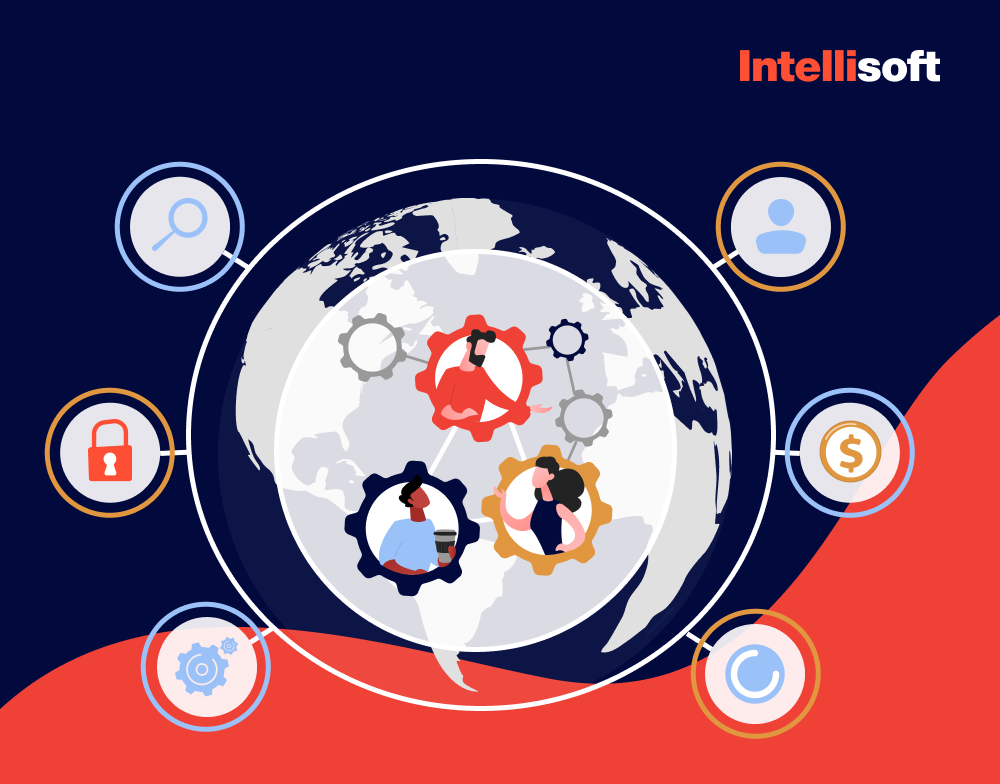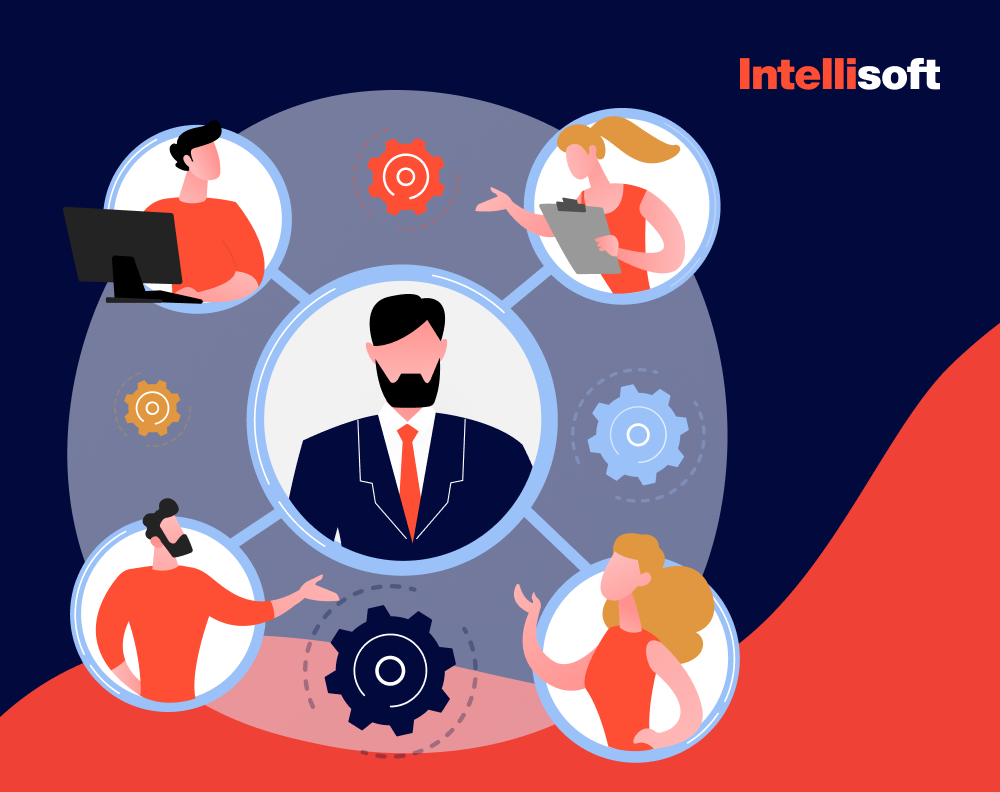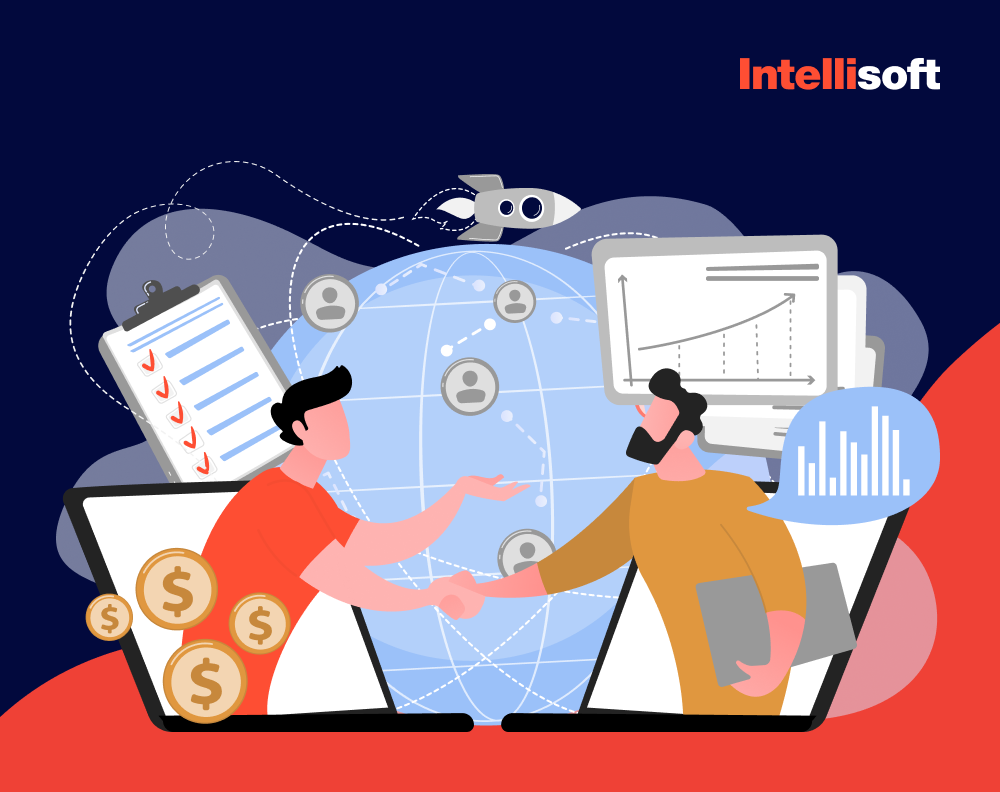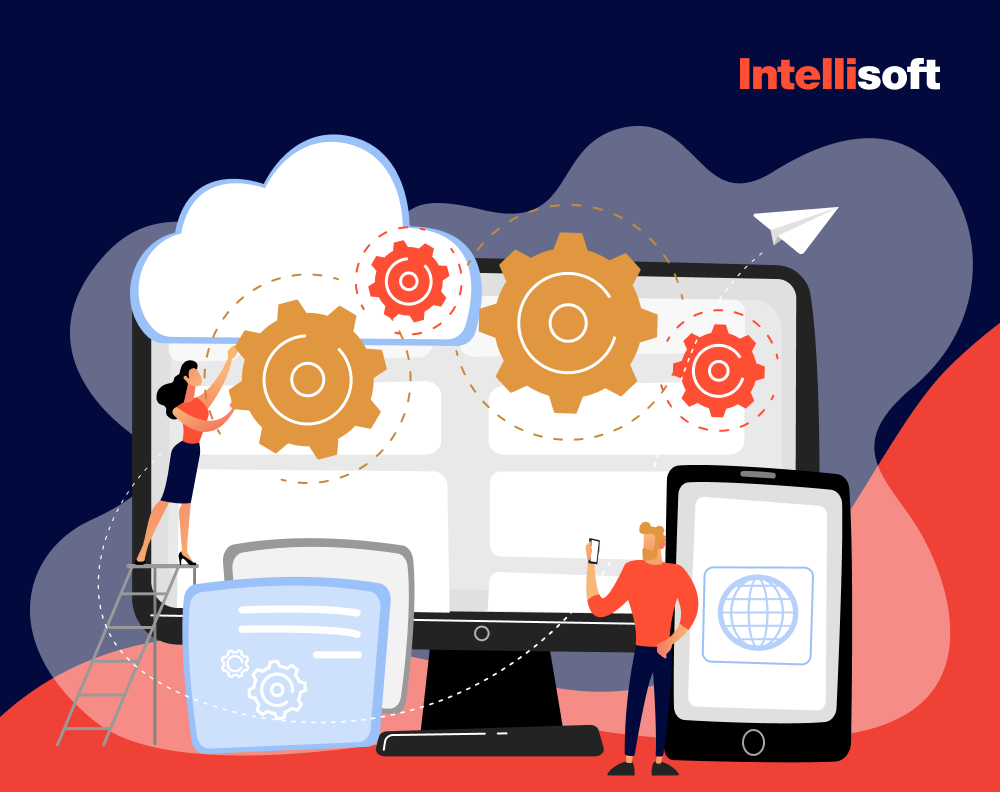If you have decided to build a software product, you have found a development partner who will guide you through this journey and bring your concept into reality. When you have been looking for an outsourcing partner, you have checked their previous cases, expertise, skills, and client reviews to ensure that you will be working with true professionals. But have you asked about the preferred pricing contract? In most cases, software development cases offer two main pricing models; time and material contract vs fixed price.
For those who are new to the outsourcing world, the terms fixed fee vs time and materials may seem confusing, so how do you choose the right pricing model for you? You have come to the right place for advice.
At IntelliSoft, we have been offering our outsourcing services to clients since 2007, and we know everything about traditional pricing models and their hybrids and combinations. In this article, we’ll share our secrets and help you choose between time and material vs fixed price models.
Table of Contents
What Is a Fixed Price Contract?
Before talking about time and materials vs fixed price construction, let’s establish what each model presupposes.
What is a firm fixed price contract? As the name of the model presupposes, the price in the fixed-price contract is set in stone, and the clients learn about the cost for the entire project before it begins. Once the price is set at the start of the project, it cannot change throughout the process, and you pay for the total job done instead of for hours or tasks.
Cost plus fixed fee contract brings clients a sense of transparency and budget predictability, but a client should share clear requirements and needs with the development team before the process starts to ensure appropriate price calculation and final results.
What is a firm fixed price contract and how does fixed price contract work in practice?
Here’s a cost-plus fixed fee contract example and how a fixed-price contract works in practice:
Step 1. Preparation
You collaborate with the development partner to clearly outline project requirements, create a plan, and document the scope of work. This helps calculate the costs effectively at the initial stages of your collaboration.
Step 2. Starting the process
Then, the development partner starts developing your software product, negotiating even the smallest changes in the process.
Step 3. Finishing the development
Finally, you receive the product, review it, and share your feedback with the developers.
Cost plus vs time and materials: When a firm fixed price contract is a good choice?
A fixed price agreement is a suitable choice in various situations, depending on the nature of the project and the level of certainty in its requirements. Here are some scenarios where a fixed price agreement might be a good choice:
- When the project requirements are clear, stable, and well-defined, with little to no possibility for change during the development process.
- When both parties are committed to minimizing scope changes during the project.
- When the project timeline is predictable, can be accurately estimated, and you can be sure that you will meet deadlines without disruptions.
- For projects with low technical complexity where the technology and processes involved are well-established and understood by both the client and the contractor.
- A fixed price agreement is often more suitable for smaller to medium-sized projects where the scope is manageable and can be well-defined.
Pros and Cons of Firm Fixed Price Contracts
A cost plus fixed fee contract is not a universal pricing agreement suitable for projects of all types and sizes. It has its clear advantages, but it also poses some challenges and has certain limitations you should consider before choosing. Let’s explore both the pros and cons of the fixed price model.
Advantages of firm fixed price contracts
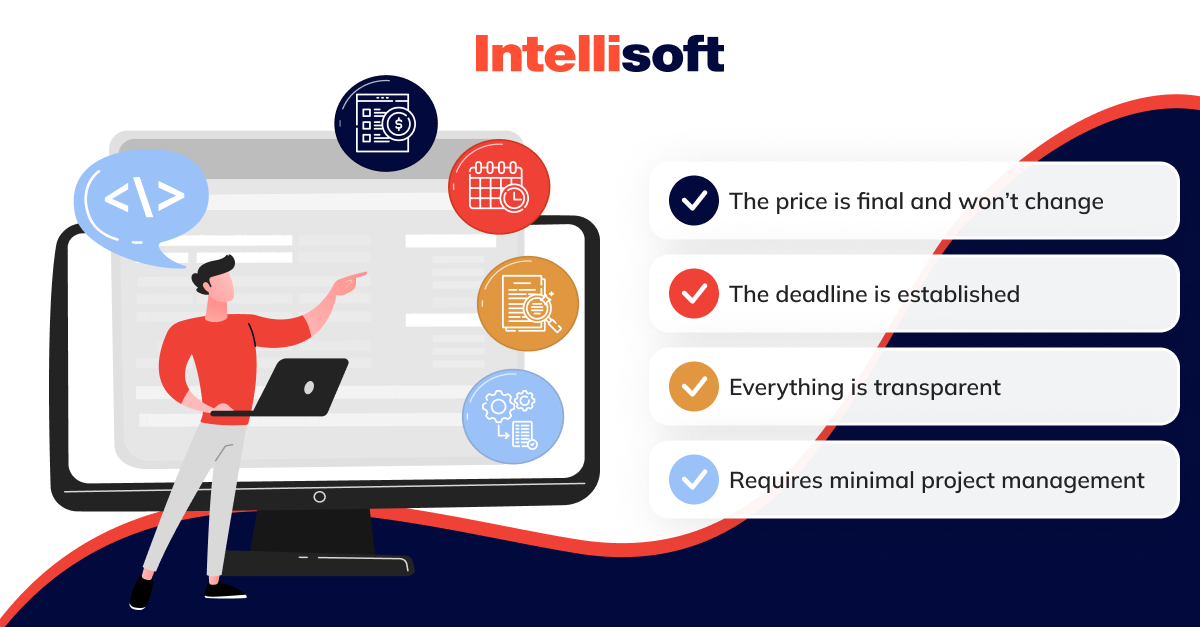
- The price is final and won’t change. Both you and the development partner show the final price from the very beginning, and you can be sure that the price will not change under any circumstances, allowing you to plan expenses.
- The deadline is established. Budget is not the only thing set in advance; you will also know the deadline for project delivery and won’t have to stress about it being missed.
- Everything is transparent. With the explicitly stated total cost and deadline, there will be no unwelcome surprises.
- Requires minimal project management. As everything is outlined in the contract, there is no need to invest time in project management. Simply await project completion and verify that all requirements and specifications have been met.
Disadvantages of fixed price contracts
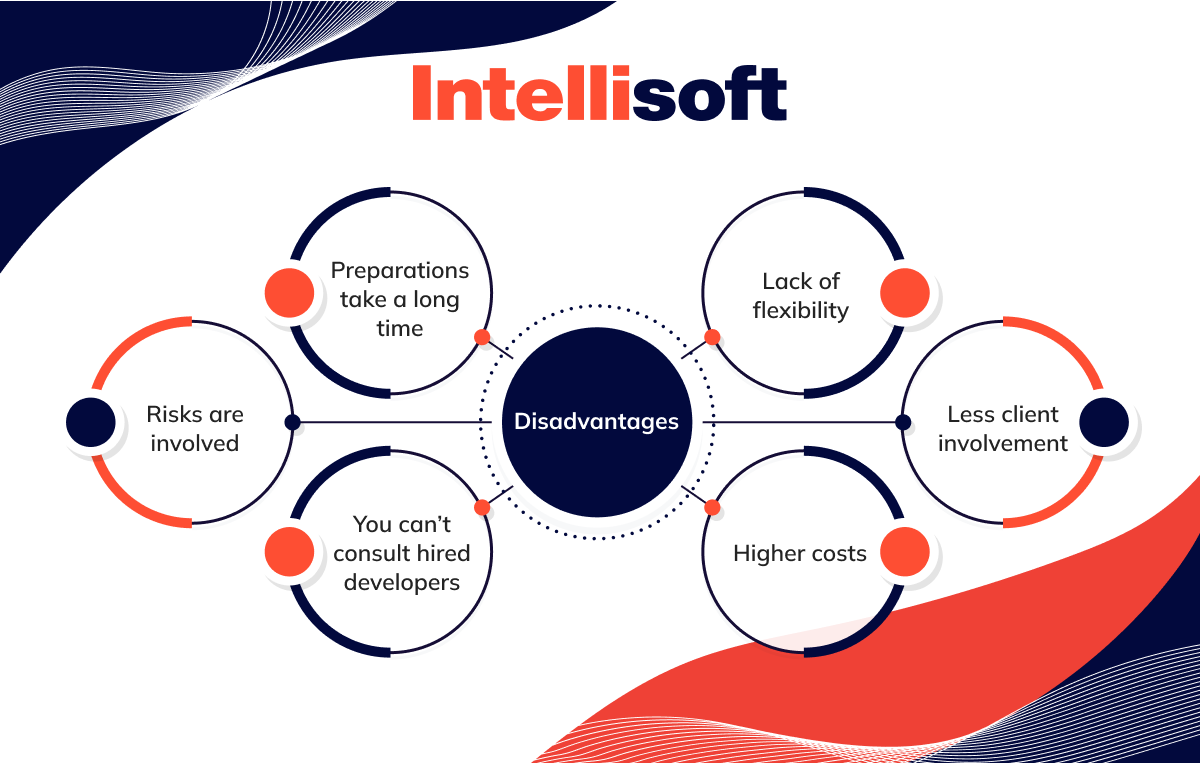
- Lack of flexibility. Since the time and budget are predetermined and can’t be changed, the fixed price model lacks flexibility. Thus, everything should be decided in advance as you won’t be able to make changes during the project.
- Less client involvement. Reduced client involvement might seem advantageous in fixed-price contracts at times. However, let’s clarify. Active engagement in the development process, receiving regular progress reports, and fostering a strong relationship with your software provider is paramount. Optimal results are often achieved through collaborative partnerships built on mutual understanding and involvement.
- Higher costs. Fixed-price contracts may lead to higher costs, especially when initial project requirements are not accurately defined. The inability to adapt to changes during the project may result in unforeseen expenses, impacting the overall cost-effectiveness.
- You can’t consult hired developers. In fixed-price contracts, clients may face restrictions in directly consulting with hired developers. This limitation hinders the ability to provide real-time feedback or make necessary adjustments, potentially affecting the project’s quality and alignment with client expectations.
- Risks are involved. When choosing between time and materials contract vs fixed price, keep in mind that fixed-price contracts involve inherent risks, as the seller needs to predict all future costs upfront. This risk factor often leads to sellers charging more to mitigate uncertainties, and clients may bear the consequences of unanticipated challenges during the project.
- Preparations take a long time. The preparation phase for fixed-price contracts can be time-consuming. Both parties must invest significant time in defining the project scope and requirements thoroughly. This extended preparatory period may lead to delays before the actual project work commences.
Related Readings:
- Nearshoring. What is it, and for Who?
- What is Staff Augmentation? A Model to Extend Your Team
- Outsourcing vs. Outstaffing Models: What Is the Difference and Their Pros & Cons
- Everything You Need to Know About Team Extension and Dedicated Team Models
- 10 Best Countries for Hiring a Dedicated Development Team
What is Time and Material Contract?
In the T&M contracts, the final cost of development is not set as it depends on the number of hours spent on the project and the materials the team uses to deliver the project.
Thus, you should first agree on the materials the team will use and hourly rate. In other words, you will pay for the actual amount of work based on a daily or hourly rate. This helps ensure that even if the project takes longer to complete or the team finishes it faster, everyone gets paid exactly the right amount for the work done.
It’s essential to consider that costs encompass more than just the hours spent by developers and designers on the project. The contract also covers meetings, communication, project management, and other necessary actions.
How does time and material pricing work in practice?
Here’s how the time and materials model works in practice:
Step 1. You and the development team establish the project’s timeline and the materials required. This initial planning phase sets the groundwork for the entire project.
Step 2. The development team breaks down the project into manageable parts, emphasizing the most critical features and functionalities. This model allows for flexibility during each stage, enabling adjustments and the testing of developed features.
Step 3. When deciding on the next functionality to develop, you assess the estimated number of days required for its implementation. This step empowers you to prioritize features based on your project’s evolving needs and goals.
Step 4. In a time and material pricing, you compensate developers based on a fixed daily or hourly rate. This approach ensures that payment aligns with the actual effort invested in the project, promoting transparency and a direct correlation between work done and compensation.
Cost plus vs time and materials: When time and materials is a good choice?
Time and materials contracts are a great choice in various scenarios:
- Particularly well-suited for intricate projects where the intricacies demand a flexible approach that can adapt to evolving challenges.
- Ideal when the precise duration of the project is challenging to predict, providing the needed flexibility to navigate unforeseen complexities.
- Effective when the project scope cannot be precisely determined due to factors such as high complexity or external variables such as market fluctuations. This flexibility accommodates changes as the project unfolds.
- Well-suited for projects with dynamic requirements, especially in competition environments where competitors frequently introduce new features. This adaptability ensures the project stays aligned with market demands.
- A suitable option when increased flexibility is essential, allowing for resource and cash flow adjustments. This flexibility proves beneficial in managing project dynamics and responding to changing priorities.
Advantages and Disadvantages of Time and Material Pricing
Just like a fixed price model, time and material pricing also has both advantages and disadvantages you need to consider carefully. Let’s explore them now.
Advantages of the T&M model
The time and material model is a great choice for different reasons, including:
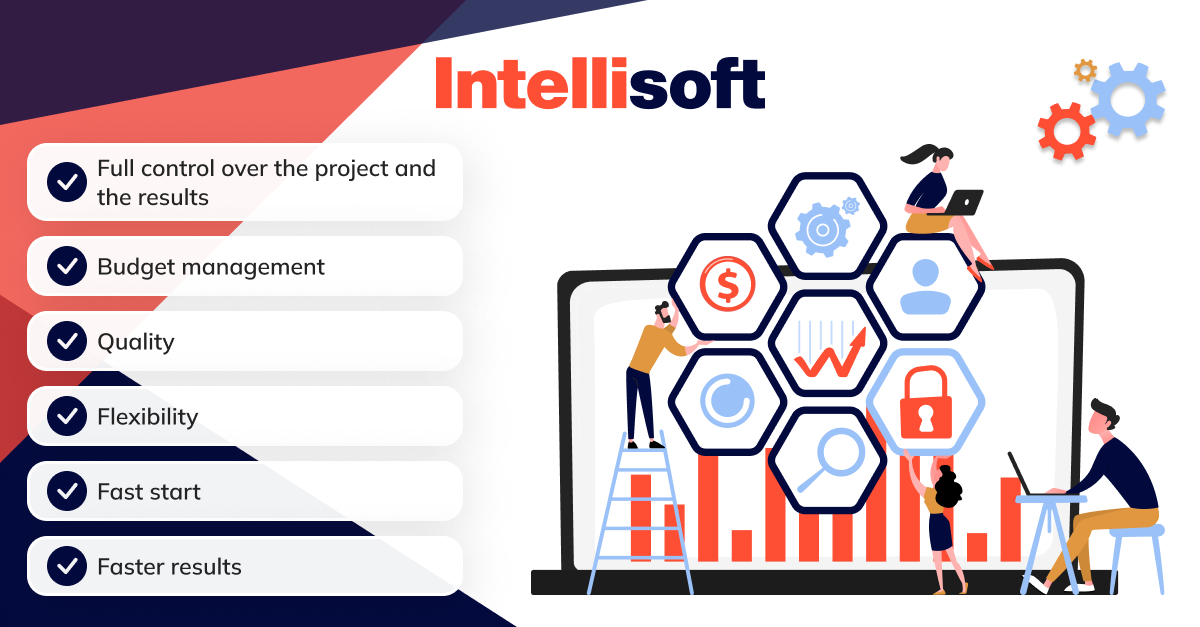
- Full control over the project and the results. With the T&M model, you can control which features to push and implement first, especially when they are essential for bringing revenue quickly. Moreover, you can control the results during the development process and make changes along the way.
- Budget management. This model offers more flexibility in terms of budget management as you can scale the team up and down and end the contract when you need to.
- Quality. Constant iterations give you the possibility to control the process and ensure that the team delivers a high-quality product.
- Flexibility. With this model, changes are not an issue; in fact, they are more than welcomed. The cooperation is open-ended, so you can end it when you feel that you have a functioning MVP, for example.
- Fast start. Since you don’t need to establish a strict requirements list and detailed scope as with the fixed price model, you can start your cooperation with the development team faster.
- Faster results. The faster you start the cooperation, the faster you will see the results. This allows you to show the app to potential users quickly.
Disadvantages of the T&M model
The time and material model may seem like a perfect solution in the majority of cases. But, when choosing between time and materials contract vs fixed price, keep in mind that T&M still has certain drawbacks you should be aware of, including:
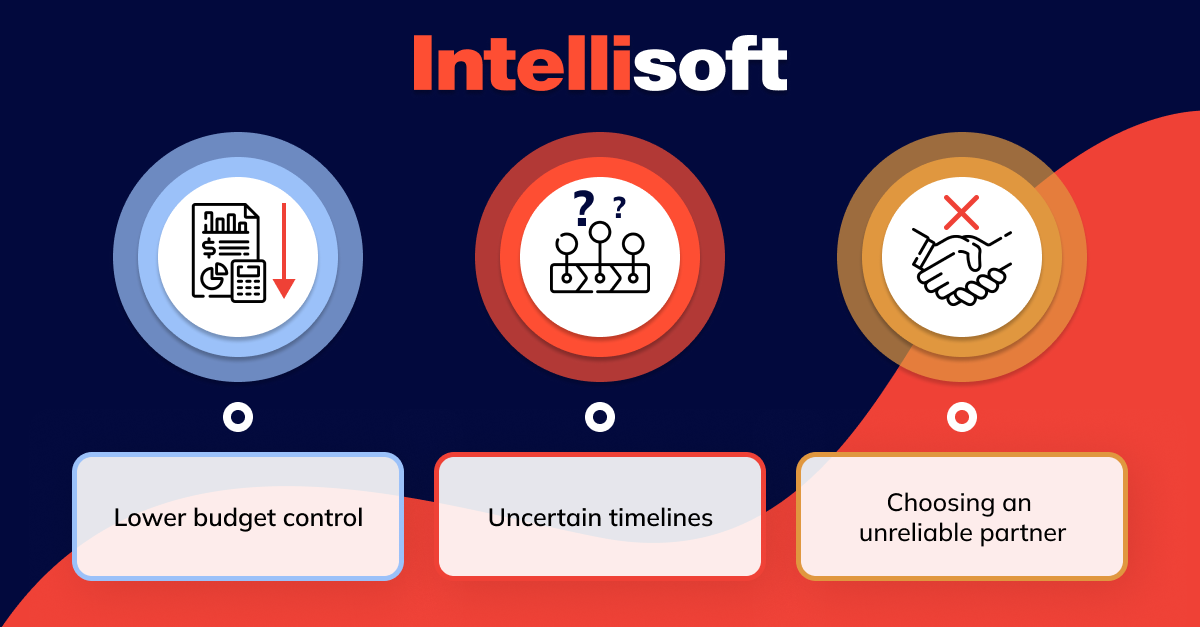
- Lower budget control. Changes in requirements can influence how much money you spend on the project. The more changes you implement – the more budget variations there will be, so you should be prepared for that. There is a belief that the time and material model is a more expensive option, but it’s nothing more than a myth.
- Uncertain timelines. Even though you may set a deadline for the project, the changing requirements and iterations may make the timelines less clear.
- Choosing an unreliable partner. This is not necessarily a drawback but something to be aware of. When looking for a development partner, make sure that they can be trusted, that your values and cultures align, and that they are experienced and skilled enough to deliver a high-quality product for you.
Time and Material vs Fixed Price: Key Differences
Time and materials vs fixed fee differ greatly in terms of project scope, payment, your involvement, and other factors. Let’s take a look at the main fixed price vs time and material differences.
Cost plus vs time and materials comparison:
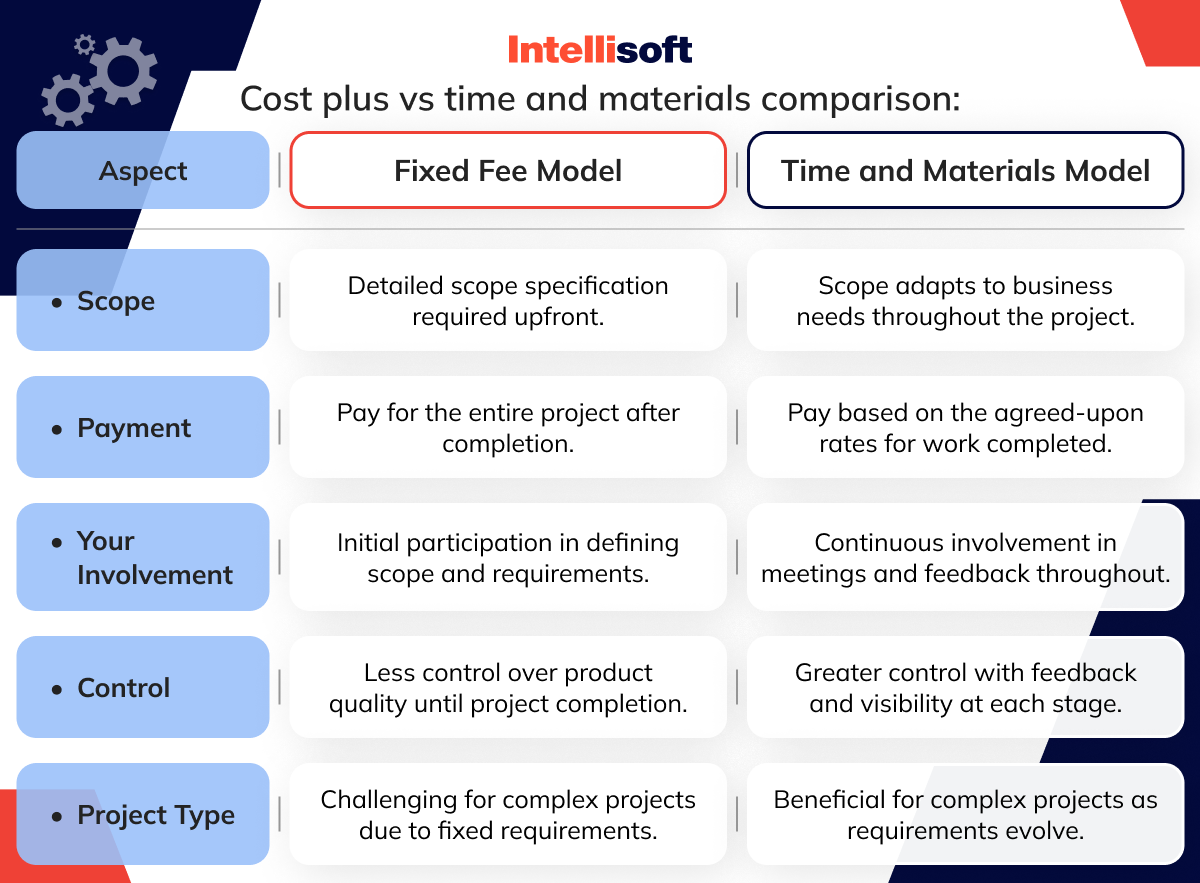
Fixed price contract vs Time and material: Scope
Fixed price: You spend a lot of time specifying the scope.
Time and material: The scope is adapted to your business needs throughout the project.
Time and materials vs Fixed fee: Payment
Fixed price: In this case, you pay for the whole project after its completion.
Time and material: In a T&M contract, you pay according to the agreement between you and the vendor for the work completed, based on the team’s hourly/daily rate.
Fixed price contract vs Time and material: Your involvement
Fixed price: In a fixed price model, you only participate in the initial meetings to help define the scope of the project and main requirements. Later, the team doesn’t need your involvement.
Time and material: In this case, you have more control over the process as you can participate in the meetings and share your feedback after each iteration.
Time and materials vs Fixed fee: Control
Fixed price: A fixed price model gives you less control over the quality of your product since you can’t share feedback and will see the product only when it’s finished.
Time and material: With this model, you can give your feedback and see how the product is evolving at any stage of its development.
Time and materials vs Fixed fee: Project
Fixed price: A fixed price model doesn’t suit complex projects well since it is challenging to determine all requirements at the beginning.
Time and material: Complex projects will benefit more from the time and material model.
Time and Materials VS Cost Plus: When to Choose a Fixed Fee Contract?
Choose a fixed fee model when:
- The requirements are clear from the start, and deadlines are determined.
- You have a limited or fixed budget.
- You want to develop an MVP.
- For small projects with a limited project scope.
Time and Materials VS Cost Plus: When to Choose a Time and Materials Contract?
Choose a time and materials model when:
- Your project is complex.
- The duration and scope of the projects are challenging to determine.
- When the requirements are dynamic.
- You need more flexibility.
- You want to have more control over the development process.
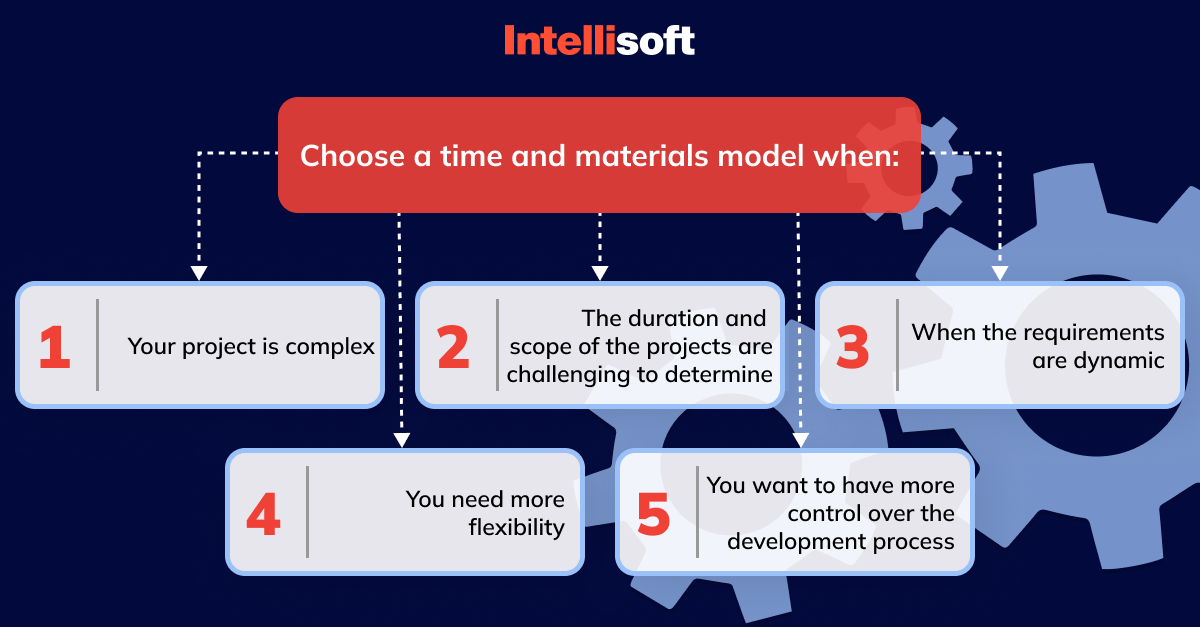
Wrapping Up
Outsourcing is no longer the simple and straightforward process it used to be when it appeared on the market. This process has multiple options, variables, and patterns that business owners should choose from to ensure that the cooperation fits their needs and requirements.
When choosing between time and material vs fixed price models, most business owners opt for an optimal product-market fit, hoping to save money in the long run. Thus, for smaller projects that have fixed scopes and requirements, a fixed-price model can be a perfect fit. On the other hand, bigger, more complex projects might need a different approach, so choosing a time and materials model might be a good idea.
At IntelliSoft, we offer both firm fixed price vs time and materials models, so even if you don’t know which one to choose – we will help you with that. All you need to do is contact us, tell us about your project, and we will estimate its costs together, helping you choose a model that fits your requirements and goals best.

